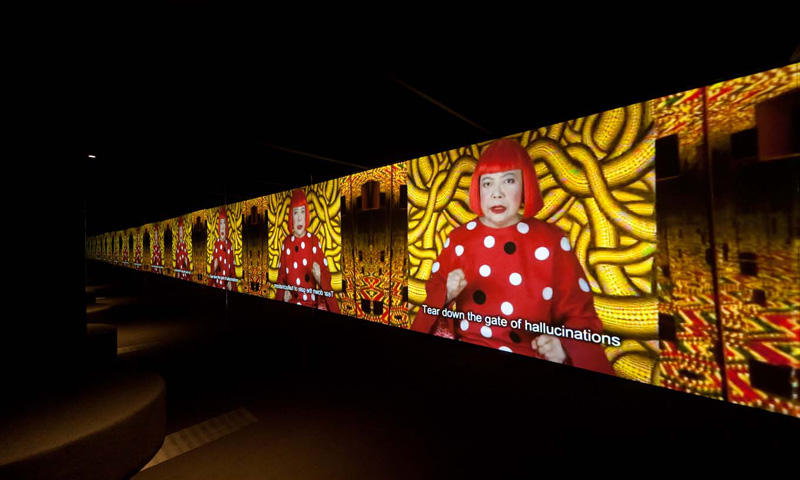SONG OF A MANHATTAN SUICIDE ADDICT
Even before she began working on her politically-charged performances and public ‘happenings’, Yayoi Kusama — a Japanese woman working in the male-dominated, 1960s New York art world — sought to integrate herself with her work by regularly posing for photographs alongside or within it. While critics continue to unravel the intricate school of thought around this tendency, ranging from accusations of shameless self-promotion to praise for anticipating later feminist strategies, it is difficult to consider Kusama’s work without its author.
Arguably, Kusama’s art has involved testing the limits of, and opening to question, conventional distinctions between a work and the space in which it is situated, as well as between artist, performer and audience, since at least her earliest ‘Infinity Net’ paintings. In their suggestion of a pattern that could easily exceed the boundaries of the canvas, these works neatly anticipated her later explorations of physical space, human relationships and economic structures through installation, performance and institutional critique.
Her video installation Song of a Manhattan Suicide Addict places the artist, characteristically, at the centre of the exhibition, reciting a poem that provides an insight into her world view. The work draws its title from her first, semi-autobiographical novel, published in 1978. Kusama devoted herself to writing for around a decade, following her return to Japan in the mid 1970s, when she was greeted with the hostility of a mainstream press intent on sensationalising her performances and ‘happenings’, as well as the indifference of an art world unable to assimilate her into developments that had taken place in her absence. Her novels were a critical and popular success, and to date she has published around 20.
In the spirit of repetition, Song of a Manhattan Suicide Addict has appeared in several formats — first produced in 1999, it was then remade in 2010. It appears here in a new presentation, using opposing mirrors to expand the simple psychedelic effects of the video background, together with the image of Kusama herself, by reflecting both into infinity.

